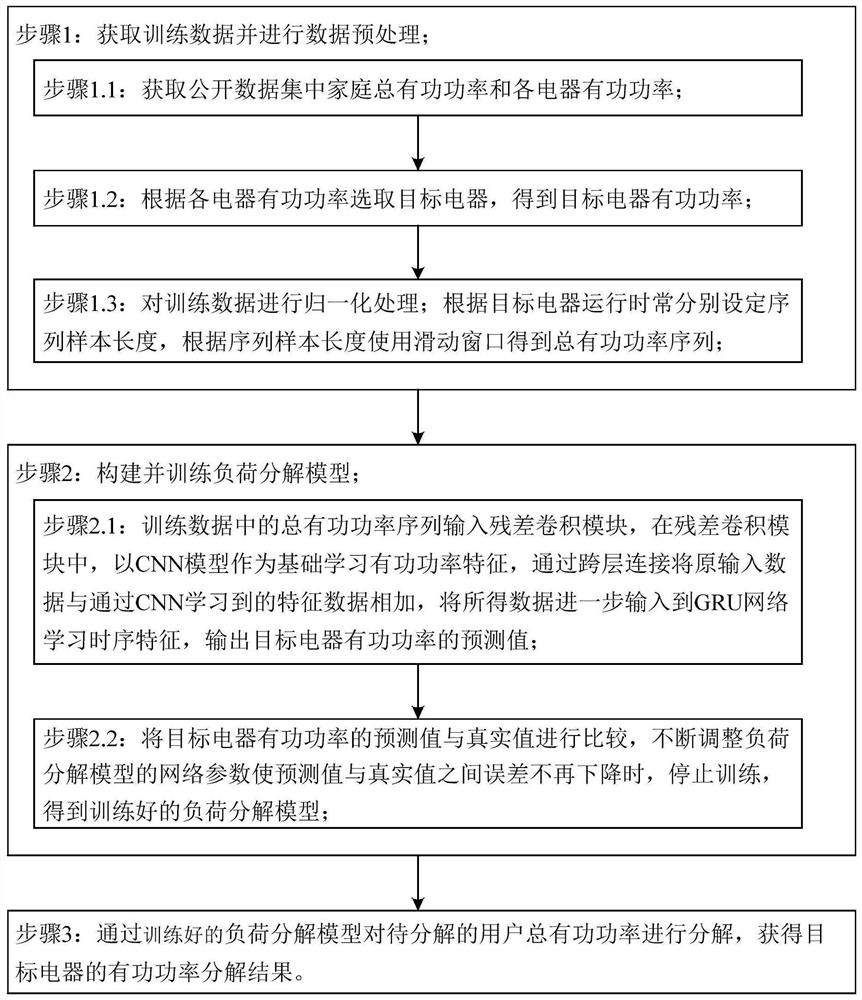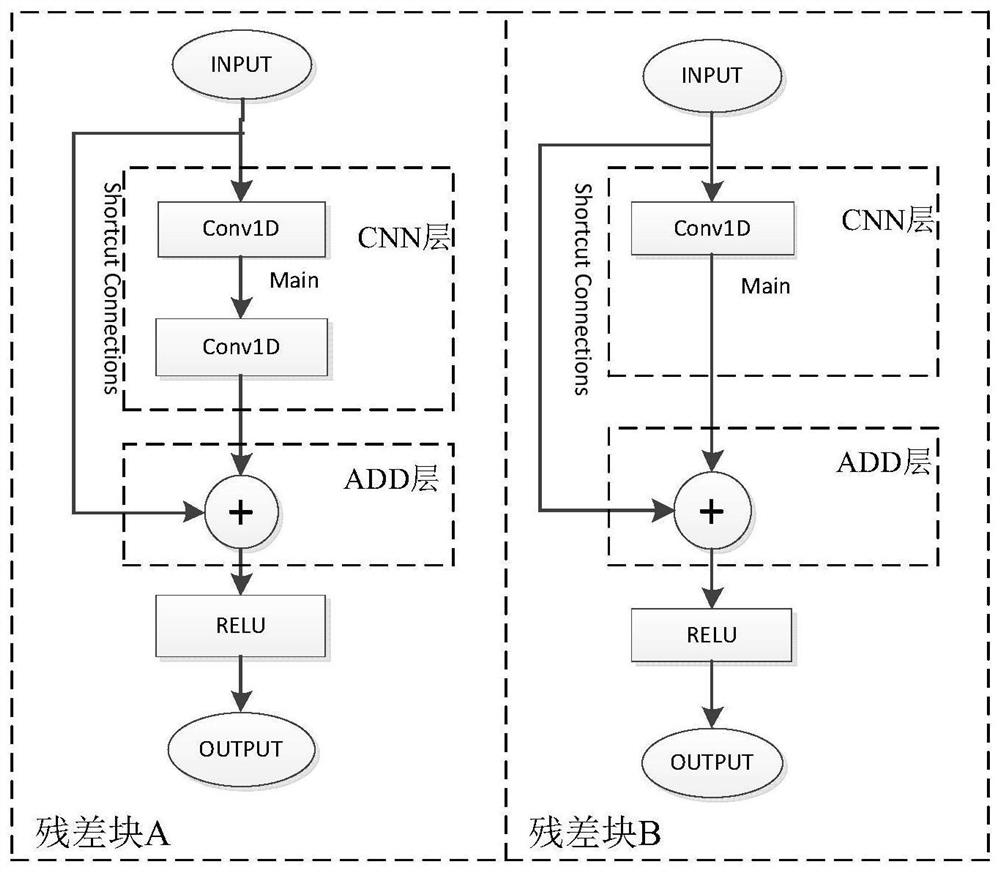Non-intrusive residential user load decomposition method based on residual convolution module
A load decomposition, non-intrusive technology, applied in the field of power systems, can solve the problems of difficulty in implementation, low decomposition accuracy, and difficulty in large-scale promotion, so as to reduce electricity costs, improve decomposition accuracy, and facilitate safe, stable and economical operation. Effect
- Summary
- Abstract
- Description
- Claims
- Application Information
AI Technical Summary
Problems solved by technology
Method used
Image
Examples
Embodiment Construction
[0063] In order to make the object, technical solution and advantages of the present invention clearer, the present invention will be further described in detail below in conjunction with the accompanying drawings and specific embodiments.
[0064] Please refer to Figure 1 to Figure 5 , the present invention is a non-intrusive residential user load decomposition method based on a residual convolution module, the steps of which include:
[0065] Step 1: Obtain training data and perform data preprocessing;
[0066] Step 1.1: Obtain the total active power of the household and the active power of each electrical appliance in the public data set; the total active power of the household and the active power of each electrical appliance are active power data under steady-state operation; in this embodiment, the public data set uses public data Set UK-DALE to obtain the electricity consumption data of user 1 in the public data set UK-DALE, and collect the active data of the househol...
PUM
 Login to View More
Login to View More Abstract
Description
Claims
Application Information
 Login to View More
Login to View More - R&D
- Intellectual Property
- Life Sciences
- Materials
- Tech Scout
- Unparalleled Data Quality
- Higher Quality Content
- 60% Fewer Hallucinations
Browse by: Latest US Patents, China's latest patents, Technical Efficacy Thesaurus, Application Domain, Technology Topic, Popular Technical Reports.
© 2025 PatSnap. All rights reserved.Legal|Privacy policy|Modern Slavery Act Transparency Statement|Sitemap|About US| Contact US: help@patsnap.com



